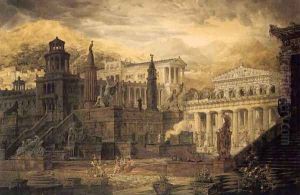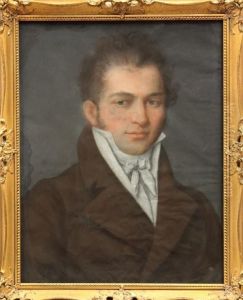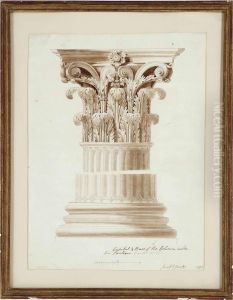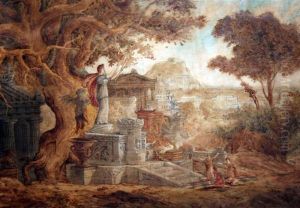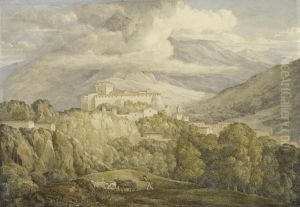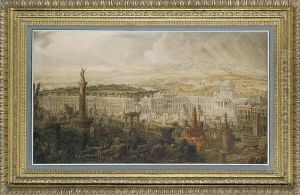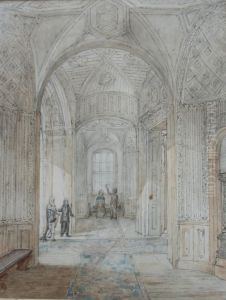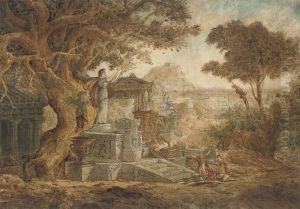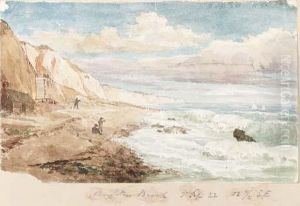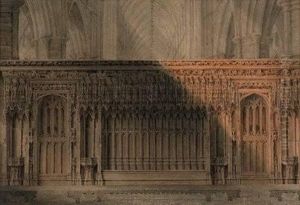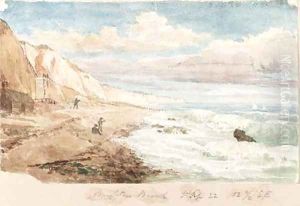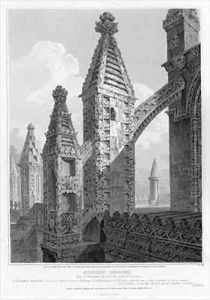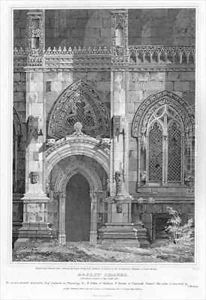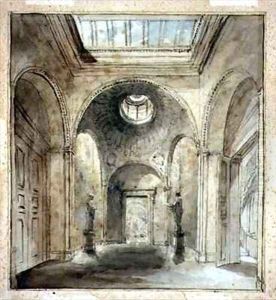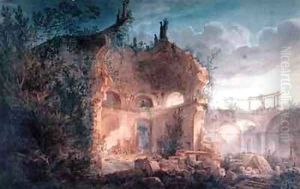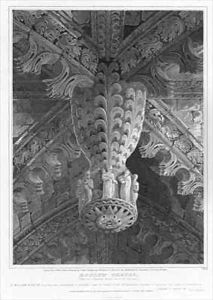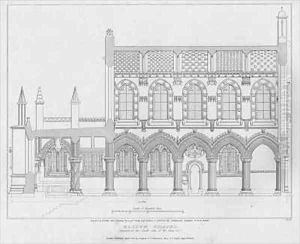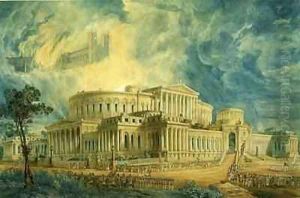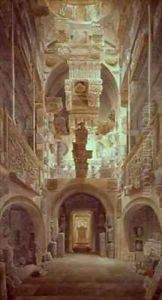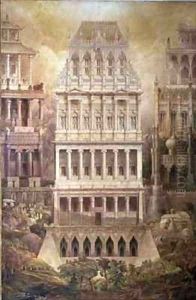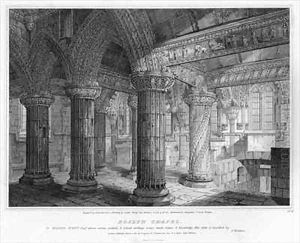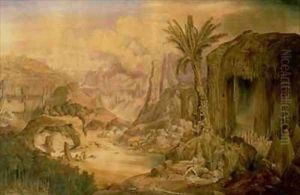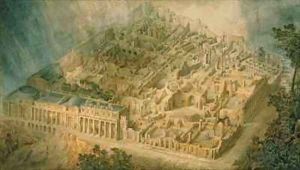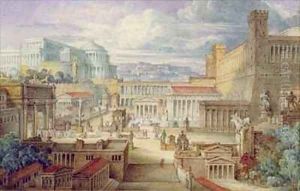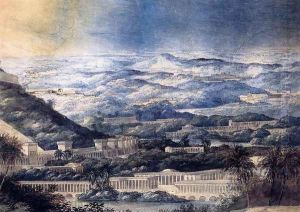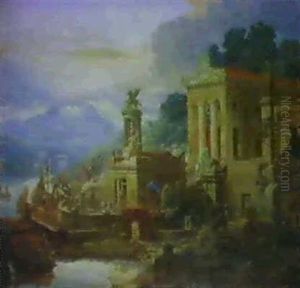Joseph Michael Gandy Paintings
Joseph Michael Gandy was an English artist, visionary architect, and architectural illustrator. Born on August 23, 1771, in London, Gandy developed a strong interest in drawing and architecture from a young age. He initially studied under the architect James Wyatt before enrolling at the Royal Academy Schools in 1789. There, he won a silver medal for architectural drawing.
Gandy's career is closely associated with the prominent architect Sir John Soane. After winning a travelling scholarship from the Royal Academy, Gandy traveled to Italy, which was a common practice for artists and architects of the era to study classical art and architecture. Upon his return to England, he began working for Soane around 1798. Gandy became known for his distinctive style of architectural rendering, which often depicted Soane's designs in dramatic and imaginative ways.
His works were not only architectural plans but also included atmospheric perspectives and reconstructions of ancient ruins. Gandy's paintings often featured a romanticized ruin aesthetic, which was popular during the period and resonated with the tastes of the Romantic movement. Notably, he often depicted Soane's buildings as ruins, which was an unusual approach that highlighted the timeless quality and the eventual decay of human creations.
Despite his talents and unique approach to architectural illustration, Gandy struggled financially throughout his life. He never achieved the success of his contemporaries as a working architect and was often dependent on Soane's patronage. His personal life was marked by tragedy and hardship, including the loss of his children and his own mental health struggles.
Joseph Michael Gandy's contributions to architectural illustration remain significant, and his works are held in various collections, including the Sir John Soane's Museum in London. His artistic vision continues to be celebrated for its romantic and imaginative qualities, offering a unique perspective on the architecture of his time. He passed away on February 24, 1843, in London, leaving behind a legacy of influential and evocative architectural artistry.
